OntoloViz drug- and phenotype-ontology visualization GUI
Project description

OntoloViz is a user-friendly interface that enables the creation of interactive sunburst plots for biomedical ontologies. It allows you to conveniently visualize your data for reports or share the generated plots with collaborators. Check out the examples section to download interactive .html examples and to gain a better understanding of the package's capabilities.
Quickstart
The GUI can be run by downloading the latest release or by installing the package via PyPi (OS independent, requires Python 3.8+):
pip install ontoloviz
After the installation you can run the GUI from the command line with the following command:
ontoloviz
Usage
The application allows importing .tsv and .xlsx files, but the use of .tsv and tab as a
separator is recommended. The GUI can create two types of sunburst diagrams to represent either phenotype or drug
ontologies, which is determined by the structure of the loaded files. Any numbers entered in the input file will be converted
to integers and decimal points will be rounded.
GUI Options
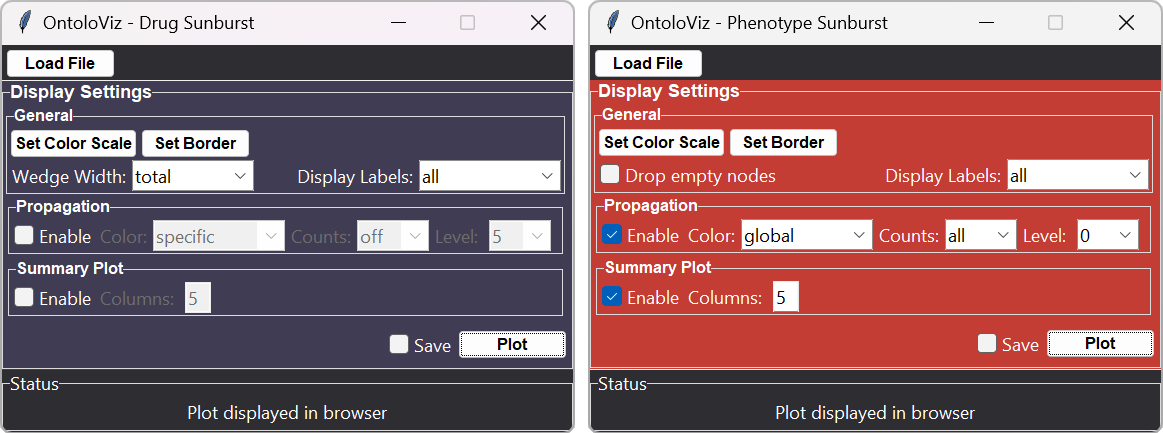
Load File: load an .tsv or .xlsx file containing ontology data based below defined file formats
Load from Web: load an .obo ontology from a pre-defined list, or define a URL to any ontology
General options
- Set Color Scale: define a custom color scale for the sunburst color scaling when color propagation is active
- Set Border: configures the border properties drawn around sunburst wedges
- Drop empty nodes (phenotype sunburst only): drops nodes who have no further children and 0 counts
- Wedge Width (drug sunburst only): switch from full outer circle (total) to count-based wedge widths (remainder)
- Display Labels: controls display of labels inside sunburst wedges, available options:
allpropagationdrugs(drug sunburst only)none
- Legend: displays a weighted color bar (disabled for summary plots with specific color propagation enabled)
Propagation options
- Enable: enables count- and color propagation from child to parent nodes
- Color: controls color propagation by the options:
off: color scale is based on 'Color' column from imported filespecific: color scale is based on the maximum values of the corresponding subtreeglobal: color scale is based on the maximum values of the entire tree ontologyphenotype(phenotype sunburst only): Only the most outer phenotype in a branch is colored
- Counts: controls count propagation by the options:
off: no counts are propagated, counts equal imported valueslevel: counts are propagated up to defined level, values above threshold remain unchangedall: counts are propagated up to central node, imported values are corrected and overwritten
- Level: controls color- and count-propagation from outer to inner levels up to defined level
- affects color propagation when Color is set to
specificorglobal - affects count propagation when Counts is set to
level - drug sunburst: 1 corresponds to the central node, 5 to the outermost node (=drug)
- phenotype sunburst: 0 corresponds to the central node, 13 to the outermost node
- affects color propagation when Color is set to
Summary options
- Enable: displays all available subtrees in a single view
(resource intensive, set Labels to
nonefor faster loading) - Columns: defines the amount of columns when summary plot is enabled
Save and Plot options
- Save: when enabled, an interactive
.htmlfile containing the plot as well as a.tsvfile containing the ontology data based on the current settings is generated for later use - Plot: Process and generate plot, opens in a Browser window
MeSH Ontology
This separator-based ontology follows the principles of the MeSH tree.
- A Tree ID is defined by a combination of three numbers or letters, for example
C01. - Levels are separated by a dot
., for exampleC01.001. - Ontologies up to thirteen hierarchical levels are supported.
- A single phenotype end-node can be assigned to multiple parent-nodes by specifying the parents tree ids as
a pipe separated string in the column
Tree ID, for exampleC01.001.001|C02.001.001. - If a child element is defined without a valid parent node existing, the GUI generates all parent elements with the default color and value 0. For example, the node
123.001is automatically generated if only the child node123.001.001was defined. This works only if at least the most central node123was defined manually. - Counts entered in the file will be converted to integers. If a node should be displayed without counts, use
0. - The loaded file must contain 7 columns and follow the below structure to be correctly recognized:
| Column Index | Header Text | Description |
|---|---|---|
| 0 | MeSH ID | Required primary identifier of a node in format C01.001 |
| 1 | Tree ID | Required | pipe delimited list of Tree IDs of a node (allows 1:N mappings) |
| 2 | Name | Optional label to be displayed inside the sunburst wedges |
| 3 | Description | Optional description displayed in the sunburst wedge tooltip |
| 4 | Comment | Optional comment displayed in the sunburst wedge tooltip |
| 5 | Counts [Name] | Required count for wedge weights, Name will be used as figure title |
| 6 | Color | Optional color for the sunburst wedges, must be hex-string in format #FFFFFF |
ATC Ontology
This kind of sunbursts have a fixed hierarchy of 5 levels and are based on the ATC tree.
- ATC codes are divided into five levels, which must follow the following naming conventions:
- 1st level: letter
- 2nd level: two numbers
- 3rd level: letter
- 4th level: letter
- 5th level: two numbers
- Example ATC code: A10BA02
- The hierarchy does only allow 1:1 child-parent relationships, contrary to the other ontologies.
For example, if the drug
deltatoninshould be assigned to the parent nodesA01AAandB01BB, it must be defined twice with the idsA01AA01andB01BB01. - The loaded file must contain 6 columns and follow the below structure to be correctly recognized as a ATC ontology:
| Column Index | Header Text | Description |
|---|---|---|
| 0 | ATC code | Required primary identifier of a node in format A10BA02 |
| 1 | Level | Optional level as number, not used for building tree |
| 2 | Label | Optional label to be displayed inside the sunburst wedges |
| 3 | Comment | Optional comment displayed in the sunburst wedge tooltip |
| 4 | Counts [Name] | Required count for wedge weights, Name will be used as figure title |
| 5 | Color | Optional color for the sunburst wedges, must be hex-string in format #FFFFFF |
Custom Separator-based Ontologies
OntoloViz supports loading of custom ontologies - if no known format is detected, a prompt will ask
whether the loaded file is a separator-based ontology or if it does contain identifiers with child-
and parent-ids. For separator-based ontologies, the following separators are supported: . (dot), , (colon), _ (underscore), / (slash).
To generate such an ontology, the following 5-column layout is required:
| Column Index | Header Text | Description |
|---|---|---|
| 0 | ID | Required node identifier of a node in format A.1 - multiple IDs can be separated with | (pipe) |
| 1 | Label | Optional label to be displayed inside the sunburst wedges |
| 2 | Comment | Optional comment displayed in the sunburst wedge tooltip |
| 3 | Count | Optional count for wedge weights |
| 4 | Color | Optional color for the sunburst wedges, must be hex-string in format #FFFFFF |
Custom Parent-based Ontologies
For loading any ontology with arbitrary IDs that do not follow a structured schema, the definition of a child-parent relationship using a 6-column layout is required:
| Column Index | Header Text | Description |
|---|---|---|
| 0 | ID | Required node identifier in any format - multiple IDs can be separated with | (pipe) |
| 1 | Parent | Required parent identifier in any format - if parent ID does not exist, node will be removed |
| 2 | Label | Optional label to be displayed inside the sunburst wedges |
| 3 | Comment | Optional comment displayed in the sunburst wedge tooltip |
| 4 | Count | Optional count for wedge weights |
| 5 | Color | Optional color for the sunburst wedges, must be hex-string in format #FFFFFF |
Templates and Examples
| Filename | Description |
|---|---|
| atc_example_covid_drugs_experimental.tsv | ATC-based example with data from the DrugBank indicating experimental drugs related to COVID-19. |
| atc_example_covid_drugs_trial_summary.tsv | ATC-based example with data from publicly available clinical trial data indicating drugs tested in clinical studies, one count represents usage in one study. |
| atc_template.tsv | ATC-based empty template of the ATC tree based on the manually curated chemical database of bioactive molecules ChEMBL v29. |
| custom_template_parent_based.tsv | Template for creating your own ontology based on any child and parent terms. |
| custom_template_separator_based.tsv | Template to create your own ontology based on a separator-based tree structure - for this template the underscore character _ has been used. |
| mesh_example_pubmed_mapped.tsv | MeSH-based example with data from the publicly available PubMed database of publications (title + abstract), where disease-related MeSH terms were extracted and mapped to the MeSH-tree. |
| mesh_template.tsv | MeSH-based empty template of the MeSH tree C and F03. Terms are unique and mapped to all related parent nodes. |
| atc_example.html | ATC-based sample plot generated with the provided covid_drugs_trial_summary.tsv file. |
| mesh_example.html | MeSH-based sample plot generated with the provided covid_drugs_trial_summary.tsv file. |
Screenshots and Demos
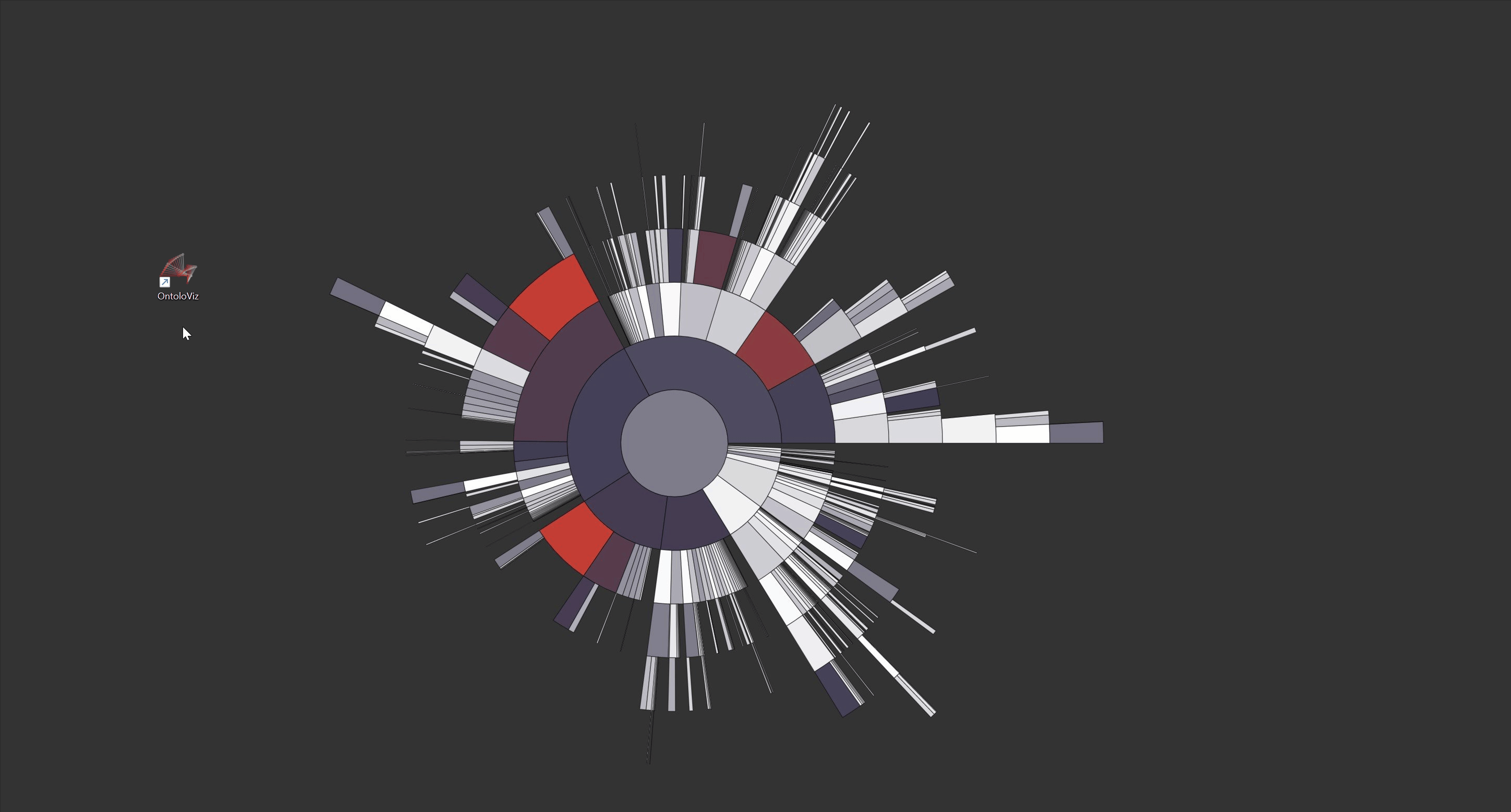
Demo 1: Minimal example for creating a phenotype based ontology
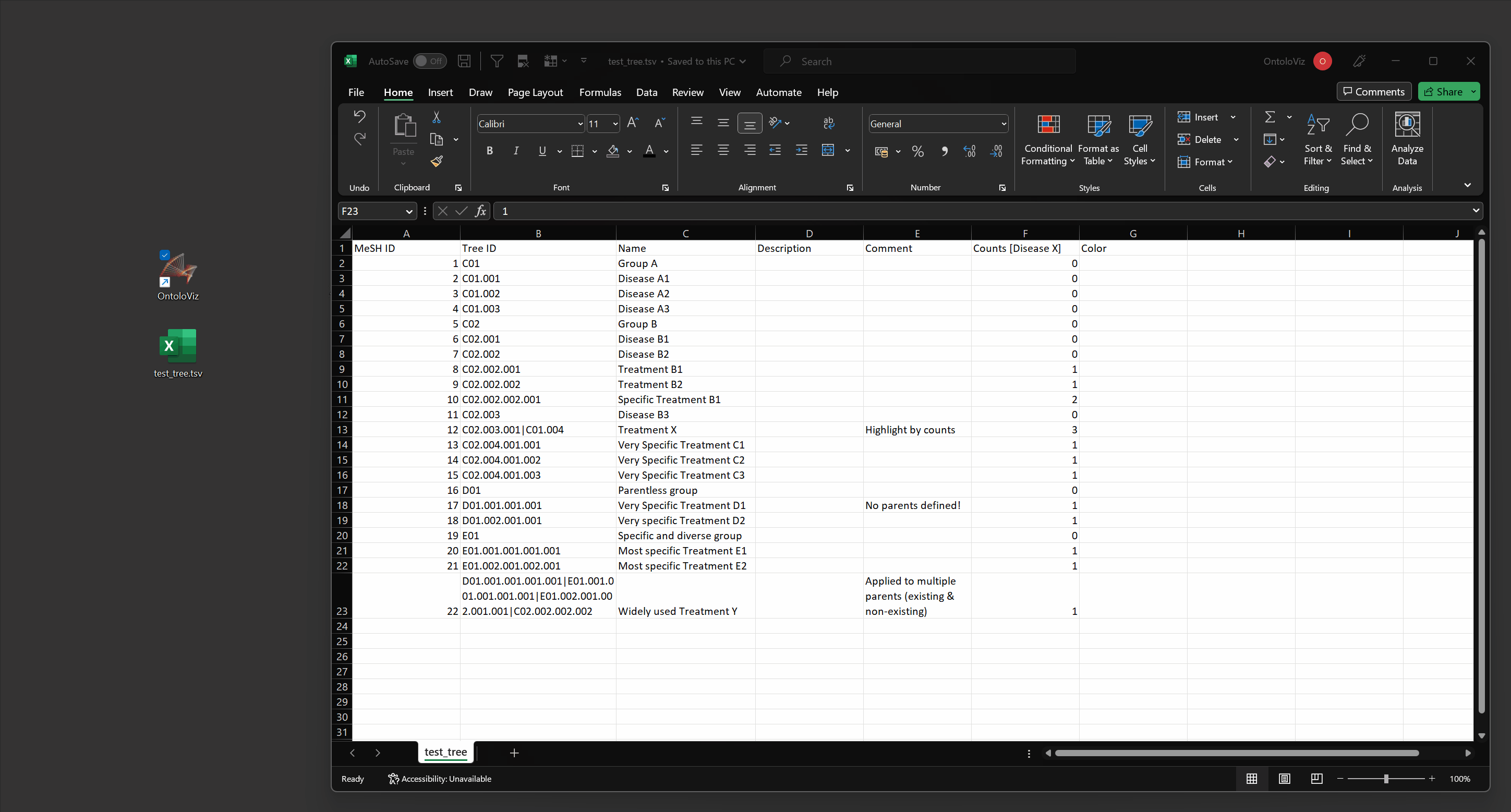
Demo 2: Showcase of some of the features available in OntoloViz (used template: test_tree.zip)

Screenshot 1: Drug sunburst plot with enabled labels, counts propagated up to level 3
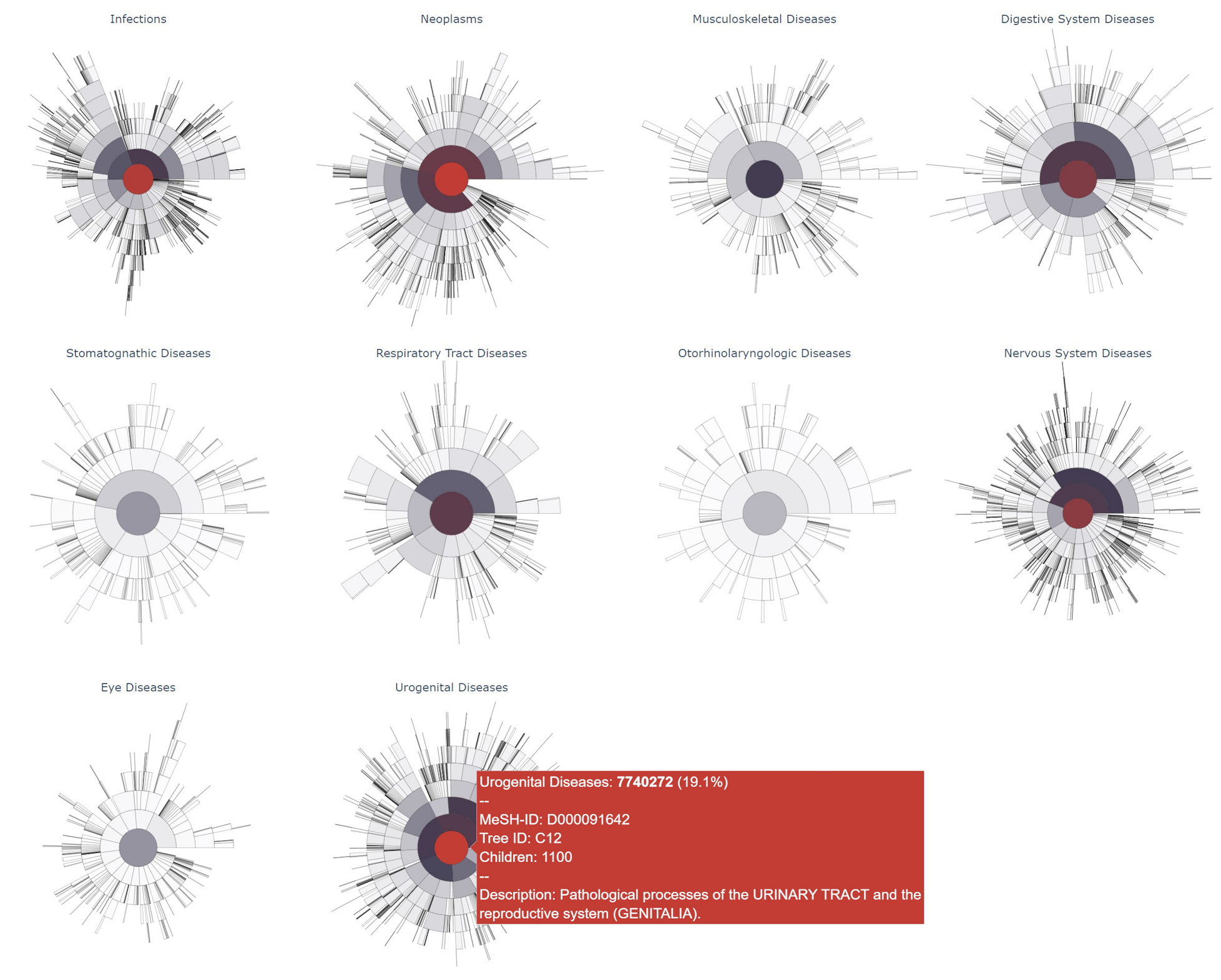
Screenshot 2: Summary phenotype sunburst plot with tooltip, counts propagated up to the central node, color coded
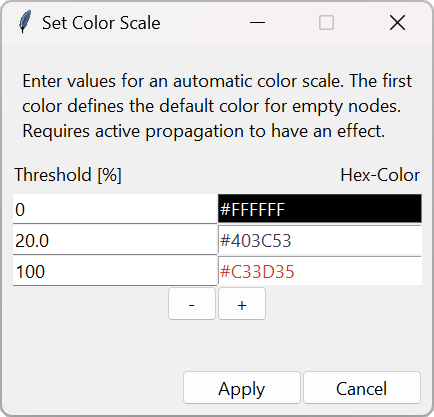
|
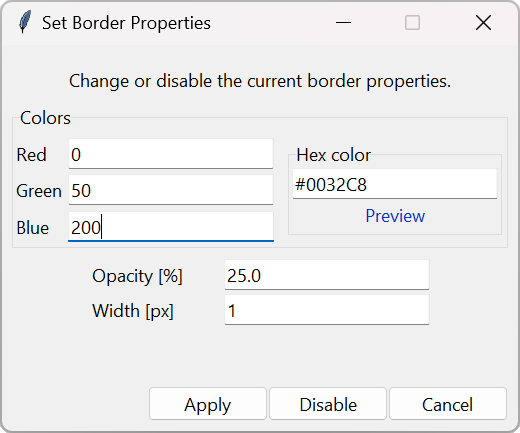
|
Screenshot 3 & 4: Left: define automatic color scales based on defined counts with thresholds and hex color codes, Right: define border properties (width, opacity, colors) or disable them entirely
Special Thanks to
- Paul Perco, who had the initial idea for this package and provided support throughout the entire process
- Andreas Heinzel, for inspiration regarding architectural- and software-related topics
- The Delta4 GmbH team for providing helpful inputs
Reference
Matthias Ley, Andreas Heinzel, Lucas Fillinger, Klaus Kratochwill, Paul Perco, OntoloViz: a GUI for interactive visualization of ranked disease or drug lists using the MeSH and ATC ontologies, Bioinformatics Advances, 2023; vbad113, https://doi.org/10.1093/bioadv/vbad113
Project details
Release history Release notifications | RSS feed
Download files
Download the file for your platform. If you're not sure which to choose, learn more about installing packages.
Source Distribution
Built Distribution
File details
Details for the file ontoloviz-1.7.4.tar.gz.
File metadata
- Download URL: ontoloviz-1.7.4.tar.gz
- Upload date:
- Size: 57.4 kB
- Tags: Source
- Uploaded using Trusted Publishing? No
- Uploaded via: poetry/1.6.1 CPython/3.11.1 Windows/10
File hashes
| Algorithm | Hash digest | |
|---|---|---|
| SHA256 | e2bed58658865088c39eebf76444f9ffe3d62b95540c3ff5df265bfd6eb649b4 |
|
| MD5 | 2aee178138c3d28dd926bdc7ce3194c8 |
|
| BLAKE2b-256 | 36feab696a558a123f5d2f4c683727a159675b69ccec5194c435e1d4e3e0f588 |
File details
Details for the file ontoloviz-1.7.4-py3-none-any.whl.
File metadata
- Download URL: ontoloviz-1.7.4-py3-none-any.whl
- Upload date:
- Size: 55.7 kB
- Tags: Python 3
- Uploaded using Trusted Publishing? No
- Uploaded via: poetry/1.6.1 CPython/3.11.1 Windows/10
File hashes
| Algorithm | Hash digest | |
|---|---|---|
| SHA256 | 8029ebe28a5d1a68111f63bc08d8489d7cc05f0eee720380251b927bebef7e42 |
|
| MD5 | c07e19d004f55c1d3cd7eade2433f207 |
|
| BLAKE2b-256 | 4eab6d0b0848dbd81df23f9ea64fd2aa9c194a2b8d2ff8a61e73f7938111eb2f |















